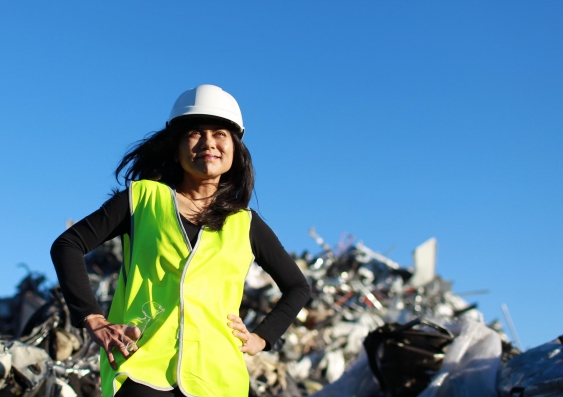With incentives, industry could tackle Australia's waste crisis
If waste is burned for energy, recyclable material is lost forever. There are better solutions, writes Veena Sahajwalla.
If waste is burned for energy, recyclable material is lost forever. There are better solutions, writes Veena Sahajwalla.

OPINION: The vast recycling problem facing communities right around Australia has been a ticking time bomb.
With China’s restriction of imports of foreign waste now in place and responsible for increased stockpiling around the nation, prices for waste streams such as glass are at a low point. It is now cheaper to import than recycle glass.
The realisation that something needs to be done about this growing waste problem has come slowly to governments around Australia at a time when consumers are increasingly seeking more sustainable outcomes.
The process of burning waste to create energy means that recyclable materials are lost forever as renewable resources. This isn’t the ideal way to look at materials – metals can be repurposed, and many plastics can be reformed and reused a number of times.
A team of researchers at the Centre for Sustainable Materials, Research and Technology (SMaRT), at UNSW Sydney have developed a range of technologies to reform waste into valuable materials to be used in existing and new manufacturing processes.
In a paper soon to be published in the international publication Journal of Cleaner Production, the team reveals our latest research about a cost-effective new process for transforming mixed waste glass into high-value building panel products such as engineered stone products, without the need for high-temperature processing technology.
This new recycling process has the potential to deliver economic and environmental benefits wherever waste glass is stockpiled, and is modelled on our recently launched electronic waste microfactory. Microfactories can operate on a site as small as 50 sq m and can be located wherever waste may be stockpiled. Our e-waste microfactory consists of a series of small machines and devices that use patented technology to turn discarded e-waste products into new and reusable products. Discarded devices are first placed into a module to break them down and then a robot extracts useful parts. Another module uses a small furnace to separate the metallic parts into valuable materials, while another reforms the plastic into a high-grade filament suitable for 3D printing.
In total, Australia produces nearly 65 million tonnes of industrial and domestic solid waste each year. Glass stockpiles alone amount to more than 1 million tonnes a year nationally.
Our new process could transform large quantities of this mixed waste glass into glass-based tiles similar in look and performance to various natural and engineered stone products currently on the market.
Our microfactories can not only produce high performance materials and products, they eliminate the necessity for expensive machinery, save on the extraction from the environment of yet more natural materials, and reduce the impact of burning waste and dumping it in landfill.
While we are still building our next microfactory to deal with these common waste streams, based on our scientifically developed technology, interest in our e-waste microfactory that can transform the components from e-waste items such as discarded smartphones and laptops into valuable materials for reuse, is growing – but not fast enough.
However, the main impediment to deploying these new methods is the lack of incentive for industry to adopt them. Industry and businesses who generate or deal with waste that can be recycled don’t have incentives to take up and invest in this technology. Tax breaks and funding assistance would help get them to adopt this technology – and that is exactly where the federal and state governments should step in to coordinate a solution.
The federal Department of the Environment and Energy has just started the first review of the Product Stewardship Act, along with changes to the national television and computer recycling scheme. These reviews looking at impacts associated with the disposal of products are another opportunity for greater sustainable practices and less waste for landfill and stockpiling.
UNSW has developed this technology with support from the Australian Research Council and is now in partnership with several businesses and organisations including e-waste recycler TES, mining manufacturer Moly-Cop, Nespresso and Resource Recovery Australia.
But unless there are incentives in place, businesses and councils will be slow to capitalise on the potential to lead the world in reforming our waste into something valuable and reusable.
Scientia Professor Veena Sahajwalla is the Director of the Sustainable Materials Research & Technology (SMaRT) Centre at UNSW Sydney.
This article was originally published in the Australian edition of The Guardian.
So a solution is at hand in terms of the technology to deal with this problem, and to treat the problem at the sites of where the stockpiles are growing. The solution would not only address the waste and recycling problem, but would create revenue from the materials reformed from the waste.
This could transform the manufacturing landscape, especially in remote locations where typically the logistics of having waste transported or processed are prohibitively expensive. This is especially beneficial for island markets and remote and regional towns.